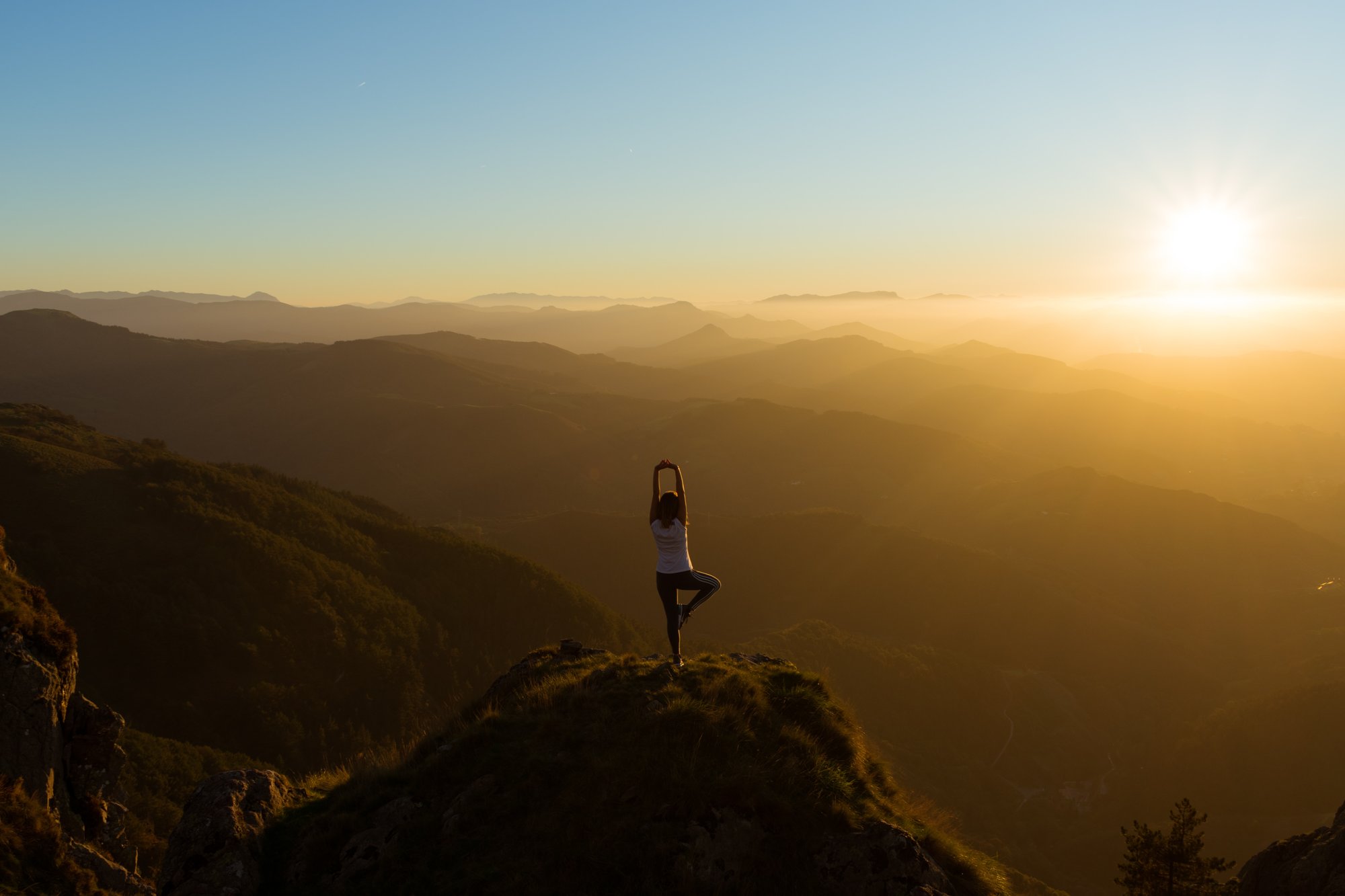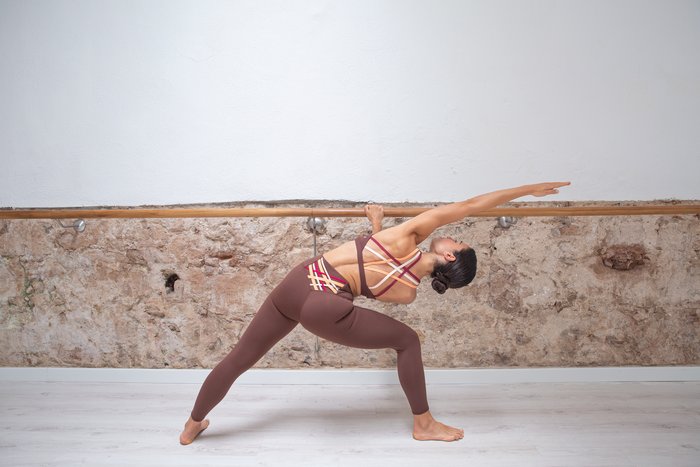What are the most popular types of yoga?
Thinking of giving yoga a try? Here are some of the styles you’ll likely see at your local studio and on YouTube.
Hatha yoga
If the title of the class you’re interested in says ‘yoga’ only, then high chances are it’s going to be a ‘Hatha’ practice. It’s the most popular type of yoga in Europe and the U.S. Sometimes, it’s also a term used for practices that are a blend of two or more yoga styles.
Hatha yoga features a mixture of poses, meditation, and breathing exercises. This type of practice promises to strengthen your core and improve your posture. It also helps build a mind-body connection. How so?
While practising Hatha yoga, you’ll learn to control and use your breath to improve your endurance, all the while calming your mind by becoming aware of the ‘here and now’.
If you’re looking for a beginners yoga class or at-home practice, then ‘Hatha’ might be a good choice.
Vinyasa flow
The term ‘Vinyasa’ is Sanskrit for “arranging something in a special way”. In this yoga style, you perform yoga poses one after another, in a specific order. This makes it one of the more physical styles out there.
For a beginner, keeping up with the movements might feel challenging. But don’t be discouraged! As you continue your practice, you’ll learn the sequences and your movement will become more and more harmonious. Ultimately, you’ll move from one position to the next in a rhythmic flow, where one breath equals one type of movement.
If, so far in your fitness journey, you’ve always enjoyed dynamic sports, then you might like Vinyasa.
Iyengar yoga
While practising Iyengar Yoga, you pay attention to three aspects – getting into a proper pose, following the right sequence, and maintaining your position for a specific time.
While it bears a resemblance to Vinyasa in that you follow a specific order of poses, Iyengar involves holding each position for an extended period. The goal is to find stability and gently progress before you move on to the next yoga pose.
Speaking of progress – what separates Iyengar from many other styles is that it lets you use props to avoid injuries. For example, if you can’t get into a side plank yoga pose called Vasisthasana, you can use a chair to support you. The goal is to get into as proper a position as possible, but without pushing yourself beyond limits or worrying about injury. As a result, you can focus on learning the sequences and truly connecting with your inner self.
So, if you’re looking for a beginners yoga class or home yoga style with a soft learning curve, Iyengar might just be ‘the one’! The same goes for any injured athletes out there – this style can help you regain strength without putting yourself at risk.
Hot yoga
Hot yoga says exactly what it means – you engage in your practice in a high-temperature environment to encourage sweating and detoxification. It was developed by yoga guru Bikram Choudhury, which is why the original hot yoga style is called ‘Bikram yoga’. Yogis engage in 26 different poses in temperatures of about 40°C and a humidity of 40% to create conditions similar to those in India.
Nowadays, ‘hot yoga’ is more about following these challenging external circumstances than it is about following Bikram yoga. For example, some studios run a hot vinyasa flow for those who are looking to work up an extra sweat.
Bear in mind though that it’s not a good fit for everyone. For example, if the sauna makes you feel light-headed, you dehydrate easily, or suffer from any chronic illnesses, then it’s always good to consult with your physician. Or, perhaps, simply choose a ‘colder’ yoga style.
Restorative yoga
Restorative yoga is a style that encourages physical, mental, and emotional healing. It’s much less about pushing yourself beyond your physical limitations than it is about launching internal healing processes and quitting ‘fight or flight’ mode.
In this practice, you rely heavily on the use of yoga blocks, pillows, blankets, and other accessories that help you feel at ease as you hold your poses for an extended period. As you engage in each pose, you focus on breathing exercises to help lower your heart rate and release feelings of calm.
A restorative yoga practice is something you can turn to in between other, more physically challenging sessions like vinyasa or hot yoga, or simply when you need to find your inner harmony.
Prenatal yoga
Prenatal yoga helps strengthen pelvic muscles and lowers discomfort experienced during pregnancy. It also teaches breathing techniques which might come in handy as you go into labour or experience shortness of breath in the third trimester.
If you’re expecting for the first time, prenatal yoga can help reconnect with your body and mind, as you experience plenty of new sensations and emotions.
Some of the same poses practised in prenatal yoga are also helpful as you recover post-labour.





